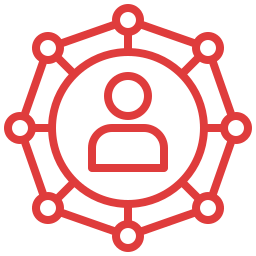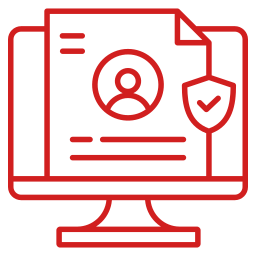IONIXX TECH NEXUS
Web3A Safer IoT Ecosystem: Harnessing Blockchain for Enhanced Security of Digital IDs.
A Safer IoT Ecosystem: Harnessing Blockchain for Enhanced Security of Digital IDs.
 Newsletter
NewsletterDimitra, an AgTech firm leverages the power of sensors, drones, GIS, farm-management software, robotics, machine learning, and blockchain in their day-to-day work, giving farmers full control over their farms.
An estimated 850 million people lack official identification. A coordinated policy approach is necessary to deliver institutional trust and operational interoperability at scale. The World Economic Forum’s Digital ID Initiative is catalyzing an international framework to realize financial, health, and social impact.
Digital identity verification will be a part of all Shiba Inu developments in the future, including on the upcoming Shibarium layer 2 blockchain. Such steps could fuel demand for SHIB tokens as the project is viewed more legitimately by serious investors.
Blockchain and AI could be the 21st century's most culturally significant pairing that could change the way we think about creativity, identity, and verification.
 A recent forecast from the International Data Corporation (IDC) estimates that there will be 41.6 billion connected IoT devices, or “things,” generating 79.4 zettabytes (ZB) of data in 2025.
A recent forecast from the International Data Corporation (IDC) estimates that there will be 41.6 billion connected IoT devices, or “things,” generating 79.4 zettabytes (ZB) of data in 2025. As IoT devices become integral to our daily lives, safeguarding their functionalities and the sensitive data they generate has become critical.
Blockchain introduces an unprecedented level of transparency and immutability to the realm of IoT. It transforms the concept of digital identity from being a vulnerable link to a fortified chain, capable of withstanding unauthorized access and tampering."
Blockchain acts as a distributed ledger, storing device identities and transaction records in an unalterable manner. That prevents fraudulent activities and ensures the integrity of data between IoT devices. That metamorphoses blockchain from mere chains of transactions to powerful shields guarding against intrusions.
Blockchain's decentralized nature mitigates the risks of a single point of failure that traditional centralized systems are prone to. By distributing identity management across the network, blockchain significantly reduces the vulnerability surface for cyberattacks.
The intersection of blockchain with IoT goes beyond security; it enables the creation of autonomous device interactions. Devices with blockchain-based digital identities can seamlessly authenticate and communicate. The convergence of blockchain and IoT heralds a future where chains evolve into formidable shields, guarding against an increasingly sophisticated array of threats.
 Digital identity's prominence surges as our digital lives expand. In healthcare, blockchain secures medical data. Supply chains benefit from verified authenticity. Smart homes gain secure, empowered access control.
Digital identity's prominence surges as our digital lives expand. In healthcare, blockchain secures medical data. Supply chains benefit from verified authenticity. Smart homes gain secure, empowered access control.In an era where digital interactions saturate our daily lives, the notion of identity has transcended basic credentials. Amid the expansive realm of digital transactions, communication, and interconnected devices, The demand for a resilient digital identity has surged significantly.
Consider healthcare, a domain fraught with data breaches and unauthorized access. Blockchain-based digital identity presents a secure avenue for managing and sharing medical records. Patients can upload their medical records, lab results, and genetic information, all authenticated and safeguarded by their unique digital identity stored on the blockchain.
The manufacturing and supply chain industry is another realm where the practical impact of blockchain-based digital identity is palpable. Each product can be assigned a unique digital identity, securely stored on the blockchain. This digital ID serves as an indelible marker, allowing manufacturers, distributors, and consumers to verify the authenticity of goods and track their journey across the supply chain.
In the world of smart homes, where devices are constantly communicating and sharing data, the need for a secure digital identity is paramount. The democratization of identity empowers individuals to grant temporary access to specified individuals, eliminating the need for intermediaries and third-party oversight.
 IoT's transformative era sparks security concerns. Vulnerabilities like centralized storage and weak authentication risk digital identity. Centralized access management struggles, while blockchain offers enhanced security, privacy, user control, fraud prevention, and decentralized trust.
IoT's transformative era sparks security concerns. Vulnerabilities like centralized storage and weak authentication risk digital identity. Centralized access management struggles, while blockchain offers enhanced security, privacy, user control, fraud prevention, and decentralized trust. The proliferation of interconnected devices marks a transformative era in the digital realm. However, this digital interconnectedness also brings forth security concerns. We delve into the paradox of IoT, where the exchange of data and information can inadvertently create avenues for security vulnerabilities.
The widespread connection of IoT devices makes them attractive targets for cybercriminals. Centralized credential storage, software vulnerabilities, and weak authentication heighten the risk to digital identity security.
Conventional centralized access management systems find it challenging to adapt to the scale and dynamics of the IoT environment. The extensive volume of devices, combined with frequent connections and disconnections, intensifies the difficulty. Decentralized access management frameworks, disseminating identity management across multiple layers, emerge as a solution. This approach not only enhances security and resilience but also mitigates the shortcomings of conventional centralized models.
Enhanced Security:Blockchain's unalterable nature fortifies digital identity, thwarting unauthorized access and data breaches.
Amplified Privacy: Immutable records on the blockchain safeguard personal information, curtailing exposure to intrusive surveillance.
User Empowerment:Individuals wield authority over their data, granting them unprecedented control over its usage and sharing.
Fraud Mitigation:Decentralization removes the reliance on intermediaries, fostering genuine and secure user authentication.
Decentralized Trust: Blockchain's unalterable nature fortifies digital identity, thwarting unauthorized access and data breaches.

Here’s team Ionixx at NFTNYC along with the awesome guys from @badcryptopodcast.m

Live from #HIMSS23 in Chicago: Ionixx's CMIO, Dr. Maanas Samant, MD, is connecting with healthcare innovators from around the world!